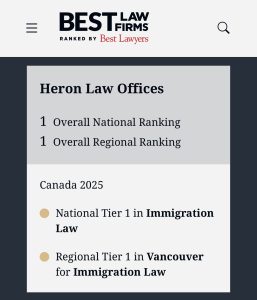By Candy Hui

New for some, a forgotten law school lecture for others – RCIC, Candy Hui discusses point first writing from the perspective of someone learning about it for the first time. This will be helpful for many new RCICs and self-reps.
The first time I heard “Point First Writing” was during a live tutorial session in my Specialization Program hosted by the College of Immigration and Citizenship Consultants (CICC) to obtain my license to appear before the Immigration and Refugee Board of Canada (IRB).
During the last course, Foundation of Refugee Appeal Division (RAD), we had recorded video by Dr. Barbara Morris speaking about Creating Clarity in Sentences and Words.
Point First Writing is exactly what the title of the video was “Creating Clarity in Sentences and Words”. It seems simple, right? But when first doing it, it took me almost twice the amount of time to complete my Representative’s Submission Letter because it wasn’t how I naturally wrote.
On average, our Representative’s Submission Letter was 10+ pages due to complex fact patterns, but with Point First Writing – keeping in mind: to the point, short, clear sentences, helped us decrease the number of pages to <10, despite multiple refusals and complex fact pattern.
Officers have limited time to review the file, so if we are able to keep our submissions short, clear and to the point – we’re making it easier for the officer to read and hopefully making it easier for them to approve our client’s application.
Isn’t that really what we’re here to do? To simplify things, so that we set up the application for success. We can never guarantee an approval, but we should do everything to try to obtain it.
When we write short sentences – it’s more effective – the writing becomes clipped, clear, and restrained – creating an authoritative, impersonal, reliable voice. In short, it makes the reader trust the writer. Use this to our advantage!
We also want to use repetition to our advantage – to drive the point home.
Here is a chart of the examples, Dr. Barbara Morris gave during the video:
| From | To |
| Take an action (taking an action) | Act |
| Make an assumption | Assume |
| Arrive at a decision | Decide |
| Come to a conclusion | Conclude |
Hope this helps fellow immigration colleagues in their writing!
Until next time Heron community.
Candy
Remember #COACHWILL and #RCICCandy always available to review and give feedback on your writing.




